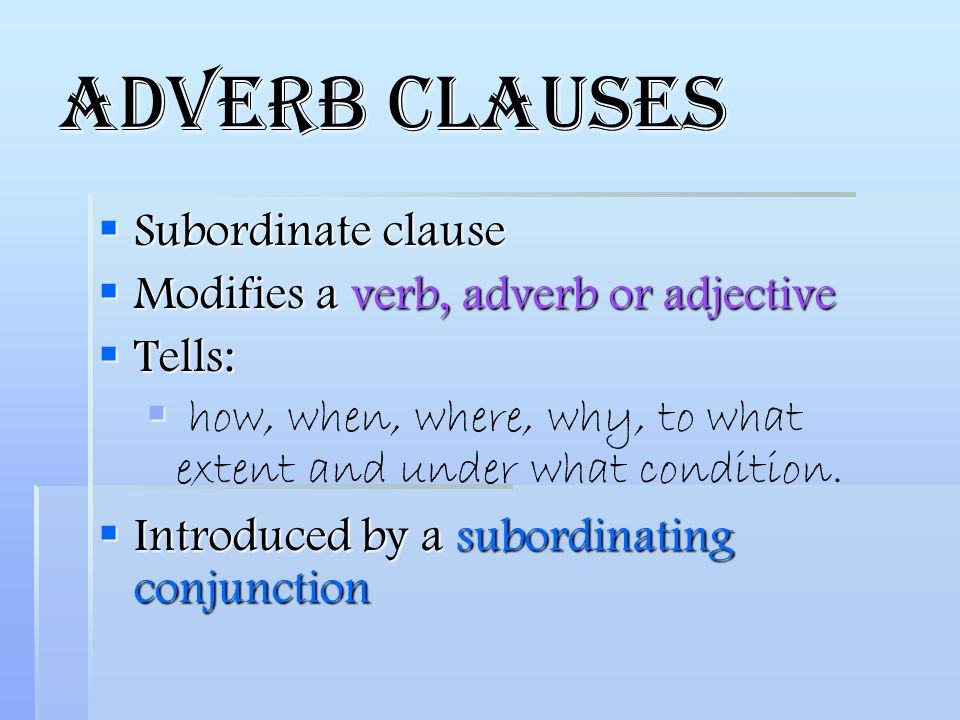 In my last post, I described how I use obscurely worded newspaper headlines to improve my students’ interpretation of ambiguous and figurative language. Today, I wanted to further delve into this topic by describing the utility of interpreting music lyrics for language therapy purposes. I really like using music lyrics for language treatment purposes. Not only do my students and I get to listen to really cool music, but we also get an opportunity to define a variety of literary devices (e.g., hyperboles, similes, metaphors, etc.) as well as identify them and interpret their meaning in music lyrics. Continue reading What are They Trying To Say? Interpreting Music Lyrics for Figurative Language Acquisition Purposes
In my last post, I described how I use obscurely worded newspaper headlines to improve my students’ interpretation of ambiguous and figurative language. Today, I wanted to further delve into this topic by describing the utility of interpreting music lyrics for language therapy purposes. I really like using music lyrics for language treatment purposes. Not only do my students and I get to listen to really cool music, but we also get an opportunity to define a variety of literary devices (e.g., hyperboles, similes, metaphors, etc.) as well as identify them and interpret their meaning in music lyrics. Continue reading What are They Trying To Say? Interpreting Music Lyrics for Figurative Language Acquisition Purposes
Category: Treatment Suggestions
Have I Got This Right? Developing Self-Questioning to Improve Metacognitive and Metalinguistic Skills
 Many of my students with Developmental Language Disorders (DLD) lack insight and have poorly developed metalinguistic (the ability to think about and discuss language) and metacognitive (think about and reflect upon own thinking) skills. This, of course, creates a significant challenge for them in both social and academic settings. Not only do they have a poorly developed inner dialogue for critical thinking purposes but they also because they present with significant self-monitoring and self-correcting challenges during speaking and reading tasks. Continue reading Have I Got This Right? Developing Self-Questioning to Improve Metacognitive and Metalinguistic Skills
Many of my students with Developmental Language Disorders (DLD) lack insight and have poorly developed metalinguistic (the ability to think about and discuss language) and metacognitive (think about and reflect upon own thinking) skills. This, of course, creates a significant challenge for them in both social and academic settings. Not only do they have a poorly developed inner dialogue for critical thinking purposes but they also because they present with significant self-monitoring and self-correcting challenges during speaking and reading tasks. Continue reading Have I Got This Right? Developing Self-Questioning to Improve Metacognitive and Metalinguistic Skills
Dear Reading Specialist, May I Ask You a Few Questions?
 Because the children I assess, often require supplementary reading instruction services, many parents frequently ask me how they can best determine if a reading specialist has the right experience to help their child learn how to read. So today’s blog post describes what type of knowledge reading specialists ought to possess and what type of questions parents (and other professionals) can ask them in order to determine their approaches to treating literacy-related difficulties of struggling learners. Continue reading Dear Reading Specialist, May I Ask You a Few Questions?
Because the children I assess, often require supplementary reading instruction services, many parents frequently ask me how they can best determine if a reading specialist has the right experience to help their child learn how to read. So today’s blog post describes what type of knowledge reading specialists ought to possess and what type of questions parents (and other professionals) can ask them in order to determine their approaches to treating literacy-related difficulties of struggling learners. Continue reading Dear Reading Specialist, May I Ask You a Few Questions?
Free Literacy Resources for Parents and Professionals
 SLPs are constantly on the lookout for good quality affordable materials in the area of literacy. However, what many clinicians may not realize is that there are massive amounts of FREE evidence-based literacy-related resources available online for their use. These materials can be easily adapted or implemented as is, by parents, teachers, speech-language pathologists, as well as other literacy-focused professionals (e.g., tutors, etc.).
SLPs are constantly on the lookout for good quality affordable materials in the area of literacy. However, what many clinicians may not realize is that there are massive amounts of FREE evidence-based literacy-related resources available online for their use. These materials can be easily adapted or implemented as is, by parents, teachers, speech-language pathologists, as well as other literacy-focused professionals (e.g., tutors, etc.).
Below, I have compiled a rather modest list of my preferred resources (including a few articles) for children aged Pre-K-12 grade pertaining to the following literacy-related areas: Continue reading Free Literacy Resources for Parents and Professionals
Using Picture Books to Teach Children That It’s OK to Make Mistakes and Take Risks
 Those of you who follow my blog know that in my primary job as an SLP working for a psychiatric hospital, I assess and treat language and literacy impaired students with significant emotional and behavioral disturbances. I often do so via the aid of picture books (click HERE for my previous posts on this topic) dealing with a variety of social communication topics. Continue reading Using Picture Books to Teach Children That It’s OK to Make Mistakes and Take Risks
Those of you who follow my blog know that in my primary job as an SLP working for a psychiatric hospital, I assess and treat language and literacy impaired students with significant emotional and behavioral disturbances. I often do so via the aid of picture books (click HERE for my previous posts on this topic) dealing with a variety of social communication topics. Continue reading Using Picture Books to Teach Children That It’s OK to Make Mistakes and Take Risks
Speech, Language, and Literacy Fun with Helen Lester’s Picture Books
 Picture books are absolutely wonderful for both assessment and treatment purposes! They are terrific as narrative elicitation aids for children of various ages, ranging from pre-K through fourth grade. They are amazing treatment aids for addressing a variety of speech, language, and literacy goals that extend far beyond narrative production. Continue reading Speech, Language, and Literacy Fun with Helen Lester’s Picture Books
Picture books are absolutely wonderful for both assessment and treatment purposes! They are terrific as narrative elicitation aids for children of various ages, ranging from pre-K through fourth grade. They are amazing treatment aids for addressing a variety of speech, language, and literacy goals that extend far beyond narrative production. Continue reading Speech, Language, and Literacy Fun with Helen Lester’s Picture Books
On the Disadvantages of Parents Ceasing to Speak the Birth Language with Bilingual Language Impaired Children
 Despite significant advances in the fields of education and speech pathology, many harmful myths pertaining to multilingualism continue to persist. One particularly infuriating and patently incorrect recommendation to parents is the advice to stop speaking the birth language with their bilingual children with language disorders. Continue reading On the Disadvantages of Parents Ceasing to Speak the Birth Language with Bilingual Language Impaired Children
Despite significant advances in the fields of education and speech pathology, many harmful myths pertaining to multilingualism continue to persist. One particularly infuriating and patently incorrect recommendation to parents is the advice to stop speaking the birth language with their bilingual children with language disorders. Continue reading On the Disadvantages of Parents Ceasing to Speak the Birth Language with Bilingual Language Impaired Children
Do Our Therapy Goals Make Sense or How to Create Functional Language Intervention Targets
 In the past several years, I wrote a series of posts on the topic of improving clinical practices in speech-language pathology. Some of these posts were based on my clinical experience as backed by research, while others summarized key point from articles written by prominent colleagues in our field such as Dr. Alan Kamhi, Dr. David DeBonnis, Dr. Andrew Vermiglio, etc.
In the past several years, I wrote a series of posts on the topic of improving clinical practices in speech-language pathology. Some of these posts were based on my clinical experience as backed by research, while others summarized key point from articles written by prominent colleagues in our field such as Dr. Alan Kamhi, Dr. David DeBonnis, Dr. Andrew Vermiglio, etc.
In the past, I have highlighted several articles from the 2014 LSHSS clinical forum entitled: Improving Clinical Practice. Today I would like to explicitly summarize another relevant article written by Dr. Wallach in 2014, entitled “Improving Clinical Practice: A School-Age and School-Based Perspective“, which discusses how to change the “persistence of traditional practices” in order to make our language interventions more functional and meaningful for students with language learning difficulties. Continue reading Do Our Therapy Goals Make Sense or How to Create Functional Language Intervention Targets
Components of Qualitative Writing Assessments: What Exactly are We Trying to Measure?
Writing! The one assessment area that challenges many SLPs on daily basis! If one polls 10 SLPs on the topic of writing, one will get 10 completely different responses ranging from agreement and rejection to the diverse opinions regarding what should actually be assessed and how exactly it should be accomplished.
Consequently, today I wanted to focus on the basics involved in the assessment of adolescent writing. Why adolescents you may ask? Well, frankly because many SLPs (myself included) are far more likely to assess the writing abilities of adolescents rather than elementary-aged children.
Often, when the students are younger and their literacy abilities are weaker, the SLPs may not get to the assessment of writing abilities due to the students presenting with so many other deficits which require precedence intervention-wise. However, as the students get older and the academic requirements increase exponentially, SLPs may be more frequently asked to assess the students’ writing abilities because difficulties in this area significantly affect them in a variety of classes on a variety of subjects.
So what can we assess when it comes to writing? In the words of Helen Lester’s character ‘Pookins’: “Lots!” There are various types of writing that can be assessed, the most common of which include: expository, persuasive, and fictional. Each of these can be used for assessment purposes in a variety of ways.
To illustrate, if we chose to analyze the student’s written production of fictional narratives then we may broadly choose to analyze the following aspects of the student’s writing: contextual conventions and writing composition.
 The former looks at such writing aspects as the use of correct spelling, punctuation, and capitalization, paragraph formation, etc.
The former looks at such writing aspects as the use of correct spelling, punctuation, and capitalization, paragraph formation, etc.
The latter looks at the nitty-gritty elements involved in plot development. These include effective use of literate vocabulary, plotline twists, character development, use of dialogue, etc.
Perhaps we want to analyze the student’s persuasive writing abilities. After all, high school students are expected to utilize this type of writing frequently for essay writing purposes. Actually, persuasive writing is a complex genre which is particularly difficult for students with language-learning difficulties who struggle to produce essays that are clear, logical, convincing, appropriately sequenced, and take into consideration opposing points of view. It is exactly for that reason that persuasive writing tasks are perfect for assessment purposes.
But what exactly are we looking for analysis wise? What should a typical 15 year old’s persuasive essays contain?
 With respect to syntax, a typical student that age is expected to write complex sentences possessing nominal, adverbial, as well as relative clauses.
With respect to syntax, a typical student that age is expected to write complex sentences possessing nominal, adverbial, as well as relative clauses.
With the respect to semantics, effective persuasive essays require the use of literate vocabulary words of low frequency such as later developing connectors (e.g., first of all, next, for this reason, on the other hand, consequently, finally, in conclusion) as well as metalinguistic and metacognitive verbs (“metaverbs”) that refer to acts of speaking (e.g., assert, concede, predict, argue, imply) and thinking (e.g., hypothesize, remember, doubt, assume, infer).
With respect to pragmatics, as students mature, their sensitivity to the perspectives of others improves, as a result, their persuasive essays increase in length (i.e., total number of words produced) and they are able to offer a greater number of different reasons to support their own opinions (Nippold, Ward-Lonergan, & Fanning, 2005).
Now let’s apply our knowledge by analyzing a writing sample of a 15-year-old with suspected literacy deficits. Below 10th-grade student was provided with a written prompt first described in the Nippold, et al, 2005 study, entitled: “The Circus Controversy”. “People have different views on animals performing in circuses. For example, some people think it is a great idea because it provides lots of entertainment for the public. Also, it gives parents and children something to do together, and the people who train the animals can make some money. However, other people think having animals in circuses is a bad idea because the animals are often locked in small cages and are not fed well. They also believe it is cruel to force a dog, tiger, or elephant to perform certain tricks that might be dangerous. I am interested in learning what you think about this controversy, and whether or not you think circuses with trained animals should be allowed to perform for the public. I would like you to spend the next 20 minutes writing an essay. Tell me exactly what you think about the controversy. Give me lots of good reasons for your opinion. Please use your best writing style, with correct grammar and spelling. If you aren’t sure how to spell a word, just take a guess.”(Nippold, Ward-Lonergan, & Fanning, 2005)
He produced the following written sample during the allotted 20 minutes.
Analysis: This student was able to generate a short, 3-paragraph, composition containing an introduction and a body without a definitive conclusion. His persuasive essay was judged to be very immature for his grade level due to significant disorganization, limited ability to support his point of view as well as the presence of tangential information in the introduction of his composition, which was significantly compromised by many writing mechanics errors (punctuation, capitalization, as well as spelling) that further impacted the coherence and cohesiveness of his written output.
The student’s introduction began with an inventive dialogue, which was irrelevant to the body of his persuasive essay. He did have three important points relevant to the body of the essay: animal cruelty, danger to the animals, and potential for the animals to harm humans. However, he was unable to adequately develop those points into full paragraphs. The notable absence of proofreading and editing of the composition further contributed to its lack of clarity. The above coupled with a lack of a conclusion was not commensurate grade-level expectations.
 Based on the above-written sample, the student’s persuasive composition content (thought formulation and elaboration) was judged to be significantly immature for his grade level and is commensurate with the abilities of a much younger student. The student’s composition contained several emerging claims that suggested a vague position. However, though the student attempted to back up his opinion and support his position (animals should not be performing in circuses), ultimately he was unable to do so in a coherent and cohesive manner.
Based on the above-written sample, the student’s persuasive composition content (thought formulation and elaboration) was judged to be significantly immature for his grade level and is commensurate with the abilities of a much younger student. The student’s composition contained several emerging claims that suggested a vague position. However, though the student attempted to back up his opinion and support his position (animals should not be performing in circuses), ultimately he was unable to do so in a coherent and cohesive manner.
Now that we know what the student’s written difficulties look like, the following goals will be applicable with respect to his writing remediation:
Long-Term Goals: Student will improve his written abilities for academic purposes.
- Short-Term Goals
- Student will appropriately utilize parts of speech (e.g., adjectives, adverbs, prepositions, etc.) in compound and complex sentences.
- Student will use a variety of sentence types for story composition purposes (e.g., declarative, interrogative, imperative, and exclamatory sentences).
- Student will correctly use past, present, and future verb tenses during writing tasks.
- Student will utilize appropriate punctuation at the sentence level (e.g., apostrophes, periods, commas, colons, quotation marks in dialogue, and apostrophes in singular possessives, etc.).
- Student will utilize appropriate capitalization at the sentence level (e.g., capitalize proper nouns, holidays, product names, titles with names, initials, geographic locations, historical periods, special events, etc.).
- Student will use prewriting techniques to generate writing ideas (e.g., list keywords, state key ideas, etc.).
- Student will determine the purpose of his writing and his intended audience in order to establish the tone of his writing as well as outline the main idea of his writing.
- Student will generate a draft in which information is organized in chronological order via use of temporal markers (e.g., “meanwhile,” “immediately”) as well as cohesive ties (e.g., ‘but’, ‘yet’, ‘so’, ‘nor’) and cause/effect transitions (e.g., “therefore,” “as a result”).
- Student will improve coherence and logical organization of his written output via the use of revision strategies (e.g., modify supporting details, use sentence variety, employ literary devices).
- Student will edit his draft for appropriate grammar, spelling, punctuation, and capitalization.
There you have it. A quick and easy qualitative writing assessment which can assist SLPs to determine the extent of the student’s writing difficulties as well as establish writing remediation targets for intervention purposes.
Using a different type of writing assessment with your students? Please share the details below so we can all benefit from each others knowledge of assessment strategies.
References:
- Nippold, M., Ward-Lonergan, J., & Fanning, J. (2005). Persuasive writing in children, adolescents, and adults: a study of syntactic, semantic, and pragmatic development. Language, Speech, and Hearing Services in Schools, 36, 125-138.
FREE Resources for Working with Russian Speaking Clients: Part III Introduction to “Dyslexia”
 Given the rising interest in recent years in the role of SLPs in the treatment of reading disorders, today I wanted to share with parents and professionals several reputable FREE resources on the subject of “dyslexia” in Russian-speaking children.
Given the rising interest in recent years in the role of SLPs in the treatment of reading disorders, today I wanted to share with parents and professionals several reputable FREE resources on the subject of “dyslexia” in Russian-speaking children.
Now if you already knew that there was a dearth of resources on the topic of treating Russian speaking children with language disorders then it will not come as a complete shock to you that very few legitimate sources exist on this subject.
 First up is the Report on the Russian Language for the World Dyslexia Forum 2010 by Dr. Grigorenko, the coauthor of the Dyslexia Debate. This 25-page report contains important information including Reading/Writing Acquisition of Russian in the Context of Typical and Atypical Development as well as on the state of Individuals with Dyslexia in Russia.
First up is the Report on the Russian Language for the World Dyslexia Forum 2010 by Dr. Grigorenko, the coauthor of the Dyslexia Debate. This 25-page report contains important information including Reading/Writing Acquisition of Russian in the Context of Typical and Atypical Development as well as on the state of Individuals with Dyslexia in Russia.
 Next up is this delightful presentation entitled: “If John were Ivan: Would he fail in reading? Dyslexia & dysgraphia in Russian“. It is a veritable treasure trove of useful information on the topics of:
Next up is this delightful presentation entitled: “If John were Ivan: Would he fail in reading? Dyslexia & dysgraphia in Russian“. It is a veritable treasure trove of useful information on the topics of:
- The Russian language
- Literacy in Russia (Russian Federation)
- Dyslexia in Russia
- Definition
- Identification
- Policy
- Examples of good practice
- Teaching reading/language arts
• In regular schools
• In specialized settings - Encouraging children to learn
- Teaching reading/language arts
 Now let us move on to the “The Role of Phonology, Morphology, and Orthography in English and Russian Spelling” which discusses that “phonology and morphology contribute more for spelling of English words while orthography and morphology contribute more to the spelling of Russian words“. It also provides clinicians with access to the stimuli from the orthographic awareness and spelling tests in both English and Russian, listed in its appendices.
Now let us move on to the “The Role of Phonology, Morphology, and Orthography in English and Russian Spelling” which discusses that “phonology and morphology contribute more for spelling of English words while orthography and morphology contribute more to the spelling of Russian words“. It also provides clinicians with access to the stimuli from the orthographic awareness and spelling tests in both English and Russian, listed in its appendices.
Finally, for parents and Russian speaking professionals, there’s an excellent article entitled, “Дислексия” in which Dr. Grigorenko comprehensively discusses the state of the field in Russian including information on its causes, rehabilitation, etc.
Related Helpful Resources:
- Анализ Нарративов У Детей С Недоразвитием Речи (Narrative Discourse Analysis in Children With Speech Underdevelopment)
- Narrative production weakness in Russian dyslexics: Linguistic or procedural limitations?
